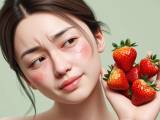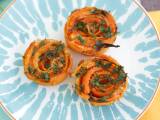Spring rhymes with pollen: which foods help reduce sneezing?

As soon as spring dawns, the buds open, the days get longer, the markets fill up with color... and for some, it's the beginning of the ordeal: itchy noses, sneezing, watery eyes. The culprit? Pollen, of course.
But what if diet could help alleviate these reactions? Without claiming to cure allergies, certain foods can help strengthen natural defenses, soothe inflammation and limit symptoms. Let's take a tour of the anti-allergy pantry:
What happens when pollen gets involved?
Hay fever, or seasonal allergic rhinitis is becoming more common. In spring, it's mainly tree pollen (birch, alder, ash...) that provokes reactions.
The immune system, a little overzealous, sees pollen as a danger. The result: it releases histamine, a molecule responsible for allergy symptoms (inflammation, runny nose, itching...).
The good news is that certain foods have anti-inflammatory and natural antihistaminic effects, or boost immunity. Enough to help you get through the season!
Spring's natural allies
1. Foods rich in quercetin
Quercetin is a flavonoid (a powerful antioxidant) known for its natural antihistaminic action. It helps stabilize the immune cells that release histamine.
Where to find it?
- Red onions
- Apples (with skin)
- Broccoli
- Black grapes
- Green tea
Dr. David Rakel, professor at the University of Wisconsin, points out that quercetin "may reduce the intensity of allergic symptoms through its modulatory effect on histamine".
2. Omega-3s: natural calming agents for inflammation
Omega-3 fatty acids are true anti-inflammatory firefighters. They reduce the production of prostaglandins, substances that promote allergic reactions.
Where can you find them?
- Oily fish (sardines, mackerel, salmon)
- Flax or chia seeds
- Nuts
- Rapeseed oil
3. Fermented foods: strengthening the intestine
The intestine plays a key role in immunity. A balanced intestinal flora can help regulate allergic reactions.
What's on the menu?
- Plain yoghurts (with active ferments)
- Raw sauerkraut
- Kefir
- Kimchi
Microbiota specialist Prof. Patrice Cani reminds us that "a well-nourished microbiota is an excellent regulator of inflammation".
4. Local honey: gentle tolerance to pollen
Honey contains traces of pollen. Consuming it regularly, especially if it comes from the region, can help the body get used to it, a bit like a natural vaccine.
Preference should be given to
- Locally produced honey (less filtered)
- Regular consumption, outside times of crisis
To limit: false friends
Certain foods can increase histamine release or contain it directly. In times of crisis, it's best to eat them in moderation:
- Tomatoes
- Strawberries
- Mature cheeses
- Cold meats
- Red wines and beers
A word about hydration
Drinking enough water helps to thin secretions, keep mucous membranes well hydrated and evacuate allergens more easily. Herbal teas, broths, infusions with thyme or ginger: everything counts!
And what do you put on your plate every day?
Here's an example of an "anti-allergy" spring menu:
- Breakfast: plain yoghurt with chia seeds, grated apple and a drizzle of local honey
- Lunch: quinoa salad, steamed broccoli, sardines, raw red onions, colza oil
- Snack: green tea and a few nuts
- Dinner: seasonal vegetable soup, slice of wholemeal bread, kefir
In conclusion: eat better to breathe better?
There are no miracle recipes here, but one encouraging observation: diet can help the body manage seasonal allergies. By opting for fresh produce rich in antioxidants, healthy fats and probiotics, you can make the most of pollen season.
What's more, it's also a great way to welcome spring gently, both on the plate and in the nostrils!
You may be interested in:
 Adèle Peyches
Adèle Peyches

